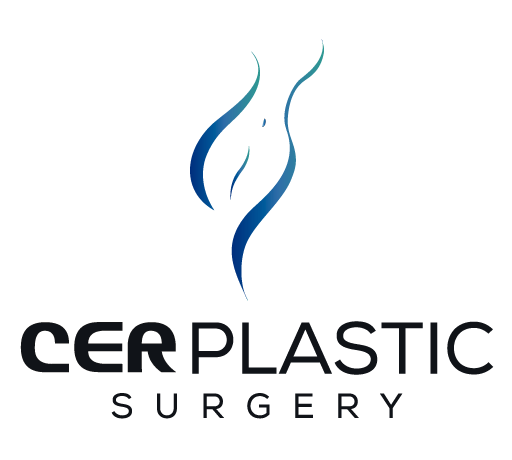Nose Job Cost
Are you considering Rhinoplasty, often referred to as a nose job, to enhance your facial harmony and boost your self-confidence? It’s an exciting decision, but like any medical procedure, it comes with a variety of considerations, including the cost. The range of nose job cost in the United States according to the ABCS national survey is $2,500 – $15,995.
What is Rhinoplasty Surgery?
Rhinoplasty, as defined by the American Board of Cosmetic Surgery (ABCS), is a surgical procedure aimed at reshaping or enhancing the appearance of the nose. It is one of the most commonly performed cosmetic surgical procedures and is often referred to as a “nose job.”
The 3 Main Types of Nose Jobs
Let’s clarify the primary types of Rhinoplasty:
- Cosmetic Rhinoplasty: This type of nose job focuses on enhancing the nose’s appearance. It can address issues like a prominent dorsal hump, a bulbous tip, or overall asymmetry.
- Functional Rhinoplasty: Functional Rhinoplasty primarily aims to improve breathing and correct structural issues within the nose. It may be recommended for those with a deviated septum or other breathing difficulties.
- Revision Rhinoplasty: In some cases, individuals may require a secondary Rhinoplasty to correct or enhance the results of a previous procedure. Revision rhinoplasty can be more complex and, as a result, may come with different cost considerations.
Nose job Cost according to the 2 Techniques More Popular
The cost of a nose job can vary widely based on several factors, including:
- Surgeon’s Experience
- Geographic Location
- Type of Nose Job
- Anesthesia and Facility Fees
- Complexity of the Procedure
- Pre-Operative Tests and Post-Operative Care Revision Rhinoplasty
The following is an approximate cost of the types of nose jobs:
- Open Rhinoplasty: its duration is approximately 3 to 5 hours depending on the required sen maneuvers and is in the range of 9,000 to 16,000
- Closed Rhinoplasty: The cost of closed rhinoplasty lasts from 1 to 1.5 hours, therefore it is more economical than open rhinoplasty and is estimated in the range of 6,200 to 8,500 all-inclusive in the US.
Risks and Considerations
While the idea of achieving your desired nasal appearance is exciting, it’s essential to be aware of potential risks and considerations:
- Infection: Like any surgical procedure, there is a risk of infection. Surgeons take precautions to minimize this risk, but it’s crucial to follow post-operative care instructions diligently.
- Swelling and Bruising: Swelling and bruising are common after Rhinoplasty and typically subside within a few weeks.
- Anesthesia Risks: Anesthesia-related complications are rare but possible. Your anesthesia provider will discuss any specific risks with you.
- Unsatisfactory Results: While most patients are satisfied with the outcome, there is a chance that you may not achieve your desired aesthetic result. Revision surgery may be necessary in some cases.
- Breathing Issues: Functional Rhinoplasty can improve breathing, but there may be a period of adjustment as you get used to the new nasal structure.
- Scarring: Rhinoplasty minimizes scarring because surgeons make most incisions inside the nose. However, individual scarring can vary.
Insurance Coverage for Rhinoplasty
If you are considering functional Rhinoplasty to address breathing difficulties, it’s essential to understand the potential for insurance coverage. Typically, insurance providers cover the costs of procedures considered medically necessary.
To determine if your functional Rhinoplasty is eligible for coverage, you should:
- Consult with your surgeon: Discuss your specific breathing issues and any medical documentation that may support the necessity of the procedure.
- Contact your insurance provider: Inquire about their policies regarding coverage for functional rhinoplasty. They may require pre-authorization or specific documentation.
- Understand your financial responsibility: Even if insurance covers a portion of the procedure, you may still have out-of-pocket expenses, such as deductibles and co-pays.
The Rhinoplasty Procedure
Now that we’ve explored the cost considerations and potential risks, let’s take a closer look at what to expect during the rhinoplasty procedure:
Consultation: Your journey begins with an initial
Consultation with a board-certified plastic surgeon. During this consultation, you will discuss your goals, expectations, and any concerns you may have.
Preoperative Evaluation: Your surgeon will conduct a thorough pre-operative evaluation, which may include medical history, physical examination, and possibly imaging studies to assess your nasal structure.
- Anesthesia: On the day of the procedure, an anesthesia team will administer anesthesia to ensure your comfort during surgery. The type of anesthesia used will depend on your surgeon’s recommendation.
- Incisions: The surgeon will make incisions based on the type of Rhinoplasty you are undergoing. Surgeons in most cases make incisions inside the nose (perform closed rhinoplasty) to minimize visible scarring. In some instances, an open Rhinoplasty approach may be necessary, which involves a small incision on the columella, the tissue between the nostrils.
- Reshaping the Nose: The surgeon will then reshape the nasal structure, which may involve removing excess cartilage or bone, adding grafts or implants, and adjusting the tip of the nose.
- Closing Incisions: After making the desired changes, the surgeon meticulously closes the incisions with sutures.
- Recovery and Post-Operative Care: Nurses will monitor you as you wake up from anesthesia after the procedure. You will receive detailed post-operative care instructions, including information on pain management, dietary restrictions, and follow-up appointments.
Alternative Options to Rhinoplasty
Rhinoplasty is not the only option for individuals seeking nasal enhancement or correction. There are alternative approaches to consider:
- Non-Surgical Rhinoplasty: Injecting dermal fillers non-surgically reshapes the nose, delivering temporary results. This option is less invasive and requires little to no downtime.
- Septoplasty: If your primary concern is a deviated septum and breathing difficulties, septoplasty may be a more focused surgical option to improve nasal function.
- Balloon Sinuplasty: For those with chronic sinus issues, balloon sinuplasty can be an effective procedure to alleviate symptoms without altering the external appearance of the nose.
Conclusion
In conclusion, the cost of Rhinoplasty varies depending on multiple factors, including the type of procedure, surgeon’s experience, location, and complexity. Understanding these cost considerations and potential risks is crucial as you embark on your Rhinoplasty journey. Additionally, it’s essential to explore alternative options and, if necessary, consult with your insurance provider to determine coverage for functional rhinoplasty.
The decision to undergo rhinoplasty should be well-informed and aligned with your aesthetic and functional goals. Consult with a board-certified plastic surgeon to discuss your unique case, receive personalized recommendations, and create a comprehensive plan that addresses your concerns and aspirations. Remember that your choice to enhance your nasal appearance or improve breathing can lead to increased self-confidence and overall well-being.
Related Articles:
START A VIRTUAL CONSULTATION
A virtual consultation is when you send us photos of the places of your body where you’d like to improve. Then our surgeon analyzes it to confirm that you are a candidate for that particular procedure. We later inform you about our doctor’s decision and give you a quote with all the information about your surgery. Please, do be at ease that everything is confidential between yourself, the doctor, and the doctor’s representative.




